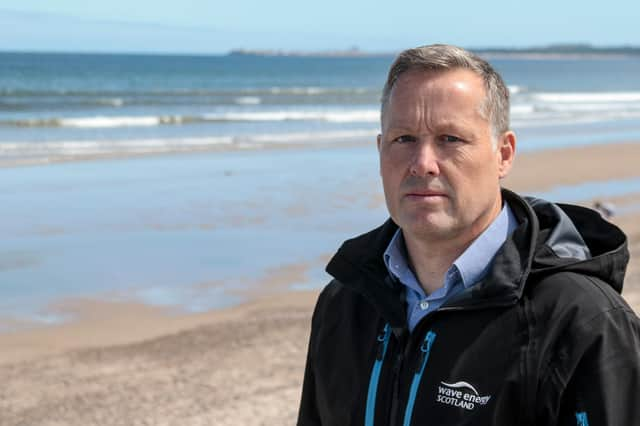Wave energy needs fair deal - comment


Offshore wind entered the scheme in 2015 and has seen the cost of new projects fall by 50 per cent since then, making it one of the cheapest forms of renewable energy.
The fourth round of the scheme opens in 2021. Wave and tidal energy are in the same funding pot as offshore wind. While it’s essential for wave and tidal to have support from government, they need a support mechanism suitable for emerging technologies. Competing against developed technology means wave and tidal energy will not secure the funding they need to be commercially viable.
Advertisement
Hide AdAdvertisement
Hide AdWave and tidal are both emerging technologies, some time away from commercial scale deployment. Orbital Marine Power, Nova Innovation and Simec Atlantis Energy are developing tidal energy devices, with some contribution already to the UK’s power grid.
Wave Energy Scotland is leading the development of wave energy devices here. Our competitive stage gate process ensures that the most promising technologies receive the maximum support.
AWS Ocean Energy and Mocean Energy have reached stage three of the Novel Wave Energy Convertor programme, with fabrication of their half- scale devices under way. Real sea testing of these devices is due to happen at the European Marine Energy Centre in Orkney later this year or early in 2021.
Projections for the cost of wave energy generation put it at about £300 per megawatt hour, higher than offshore wind, which is below £40. This is mainly due to the early development stage of wave energy technology, so as advances are made the cost of production will fall, but that is unlikely to happen in time for the fourth CfD round.
According to a report from the Offshore Renewable Energy Catapult in 2018, wave energy could be worth £4 billion to the UK economy by 2040. Half of the economic benefit would be generated in coastal areas. The economic benefits are only fully achievable if the technology is properly supported from the early stages of development.
The Scottish Government has shown its commitment to wave energy by providing the funding managed by Wave Energy Scotland. More than £41 million has been invested in technology development via the programme. Once we have successful commercial scale technology development, the next phase of support will be from the likes of the CfD scheme but only if these are administered fairly across technologies.
Industry responded to the recent news on funding pots. It remains to be seen whether the Department for Business, Energy and Industrial Strategy will revisit the structure to provide fairer funding for all forms of renewable energy technology.
Tim Hurst is MD of Wave Energy Scotland
A message from the Editor:
Thank you for reading this story on our website. While I have your attention, I also have an important request to make of you.
Advertisement
Hide AdAdvertisement
Hide AdThe dramatic events of 2020 are having a major impact on many of our advertisers - and consequently the revenue we receive. We are now more reliant than ever on you taking out a digital subscription to support our journalism.
Subscribe to scotsman.com and enjoy unlimited access to Scottish news and information online and on our app. Visit https://www.scotsman.com/subscriptions now to sign up. By supporting us, we are able to support you in providing trusted, fact-checked content for this website.
Joy Yates
Editorial Director
Comments
Want to join the conversation? Please or to comment on this article.